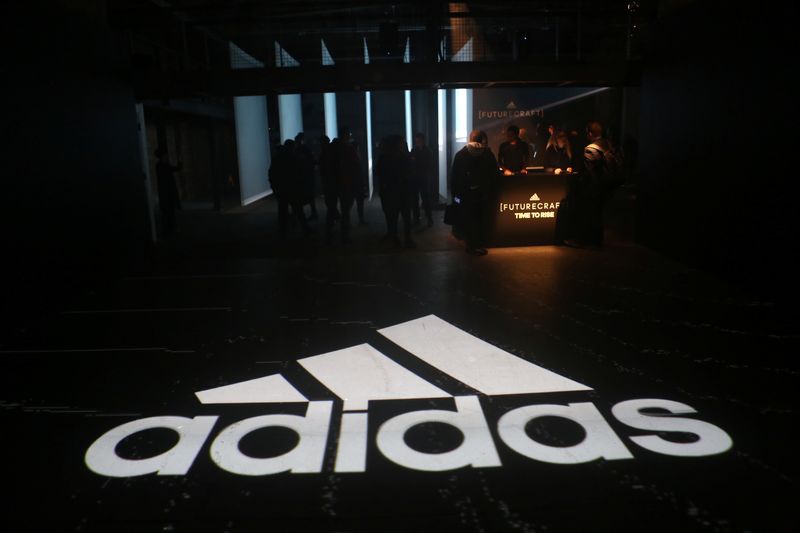Investing.com’s stocks of the week
By Helen Reid
LONDON (Reuters) - Adidas (OTC:ADDYY) struck an optimistic note on Wednesday, saying retailers are "visibly" more interested in its autumn/winter 2024 range as the German sportswear giant increases production of sneakers such as the Samba to meet high demand.
CEO Bjorn Gulden, in the job since Jan. 1, has been driving a turnaround at the company bruised by last year's break-up with rapper Kanye West, who goes by Ye, which left Adidas with unsold Yeezy shoes worth 1.2 billion euros ($1.3 billion).
Gulden said on Wednesday that the "terrace" shoe ranges Samba, Gazelle, Spezial and Campus are driving growth in the company's lifestyle business after lifting its full-year outlook last month, partly thanks to Yeezy shoe sales.
"We see the interest in our brand and products increasing in all markets," Gulden said in a statement, adding that current performance is still "not good enough".
Adidas doesn't currently have enough supply to meet demand for its terrace shoes, Gulden told reporters.
"Demand is much higher globally than we have supply, so we could have had much higher sales if we had the product," he said, adding that Adidas would keep ramping up production.
Adidas expects a loss of 100 million euros ($106 million) this year, having warned in February of a possible 700 million euro loss resulting from the end for the highly profitable Yeezy line.
Shares in Adidas, which have gained more than 30% since the start of the year, were down about 1% in early trading.
Gulden said Adidas will broaden its running range to offer more attractive and comfortable shoes at lower prices because people increasingly wear running shoes day-to-day. Bigger U.S. rival Nike (NYSE:NKE) has also said it will sharpen its focus on running shoes
"Adidas' competitive position compared to Nike is improving," said Robert Schramm-Fuchs, portfolio manager at Janus Henderson, which holds Adidas shares.
Gulden has been focused on building stronger relationships with wholesalers after previous management prioritised the company's own stores and online operation, Schramm-Fuchs said.
"Adidas needs to earn back the shelf space, but I think they have the right product to do it," he said.
The renewed focus on wholesale also comes as newer running and lifestyle brands increase competition.
"Hoka, On Running and others are taking space in some of the more premium sports retailers," said Deutsche Bank analyst Adam Cochrane.
Adidas inventory levels fell 23% year on year to 4.85 billion euros ($5.18 billion). That was a positive development, given that other apparel and footwear retailers in the United States and elsewhere have been struggling with excess stocks and cutting prices to move products off the shelves.
The company's gross margin for the quarter rose by 0.2 percentage points to 49.3%, helped by reduced freight costs and fewer discounts.
Currency-adjusted sales in North America fell 8.8% owing to reduced sales to wholesalers, Adidas said, adding that high inventory levels in the United States would continue to impact its business "for a while".
Adidas sales in Greater China grew by 5.7% in currency-adjusted terms after growth of 16.4% in the second quarter. The company has been working to rebuild its brand in China, where it had lost market share to rivals.
Yeezy shoes globally generated revenue of 350 million euros in the third quarter, "somewhat lower" than the third quarter of last year, Adidas said.
($1 = 0.9359 euros)
